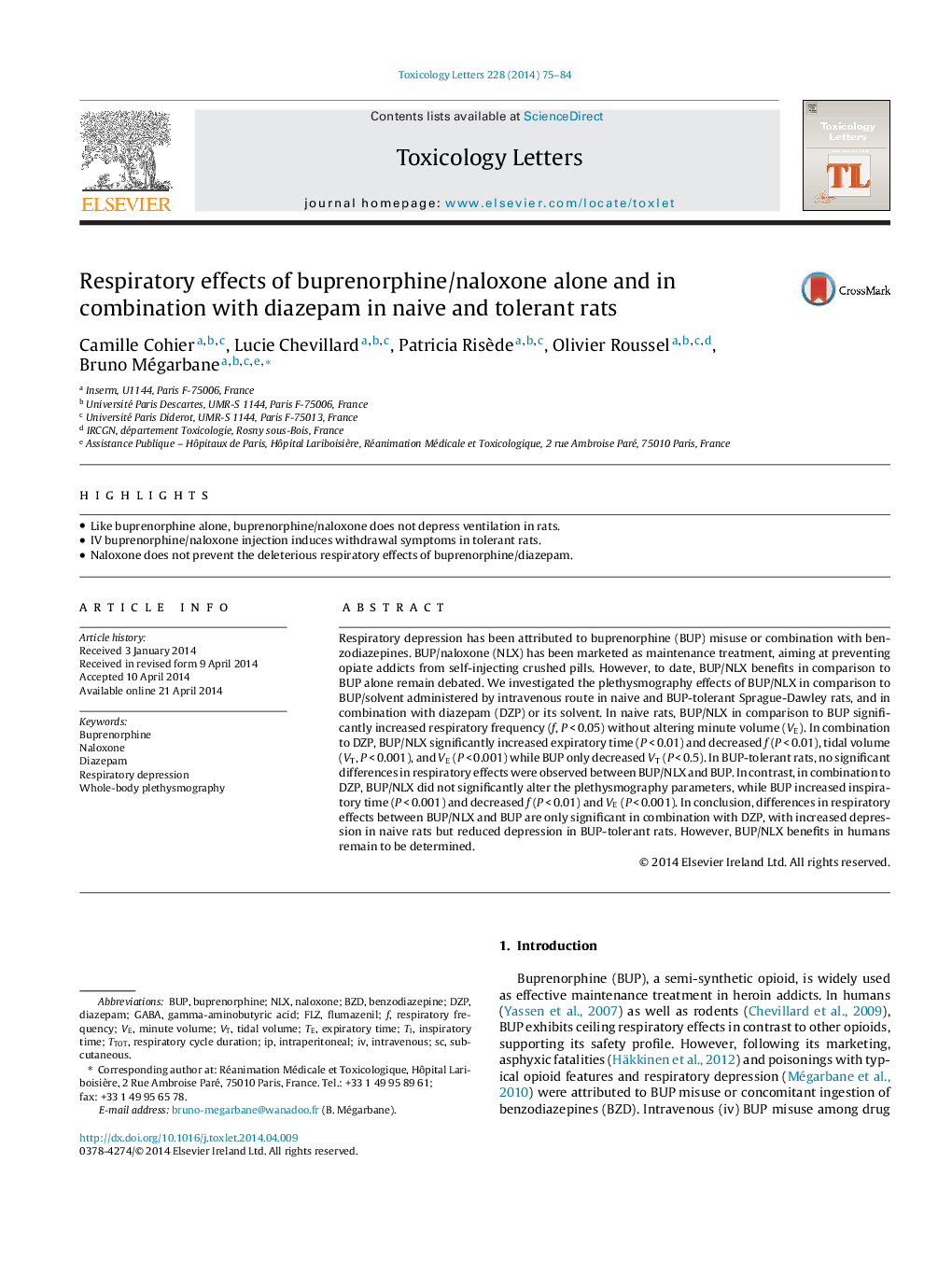| Article ID | Journal | Published Year | Pages | File Type |
|---|---|---|---|---|
| 5860332 | Toxicology Letters | 2014 | 10 Pages |
Abstract
Respiratory depression has been attributed to buprenorphine (BUP) misuse or combination with benzodiazepines. BUP/naloxone (NLX) has been marketed as maintenance treatment, aiming at preventing opiate addicts from self-injecting crushed pills. However, to date, BUP/NLX benefits in comparison to BUP alone remain debated. We investigated the plethysmography effects of BUP/NLX in comparison to BUP/solvent administered by intravenous route in naive and BUP-tolerant Sprague-Dawley rats, and in combination with diazepam (DZP) or its solvent. In naive rats, BUP/NLX in comparison to BUP significantly increased respiratory frequency (f, PÂ <Â 0.05) without altering minute volume (VE). In combination to DZP, BUP/NLX significantly increased expiratory time (PÂ <Â 0.01) and decreased f (PÂ <Â 0.01), tidal volume (VT, PÂ <Â 0.001), and VE (PÂ <Â 0.001) while BUP only decreased VT (PÂ <Â 0.5). In BUP-tolerant rats, no significant differences in respiratory effects were observed between BUP/NLX and BUP. In contrast, in combination to DZP, BUP/NLX did not significantly alter the plethysmography parameters, while BUP increased inspiratory time (PÂ <Â 0.001) and decreased f (PÂ <Â 0.01) and VE (PÂ <Â 0.001). In conclusion, differences in respiratory effects between BUP/NLX and BUP are only significant in combination with DZP, with increased depression in naive rats but reduced depression in BUP-tolerant rats. However, BUP/NLX benefits in humans remain to be determined.
Keywords
Related Topics
Life Sciences
Environmental Science
Health, Toxicology and Mutagenesis
Authors
Camille Cohier, Lucie Chevillard, Patricia Risède, Olivier Roussel, Bruno Mégarbane,
